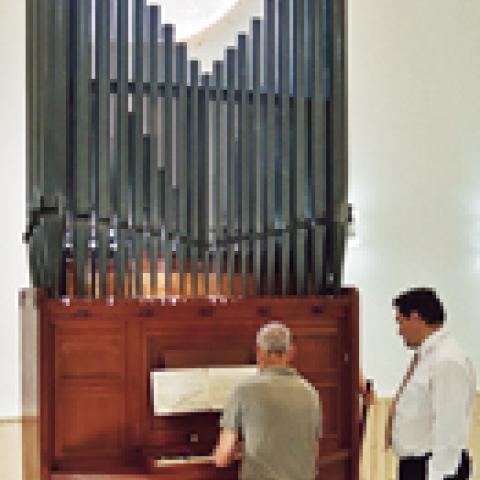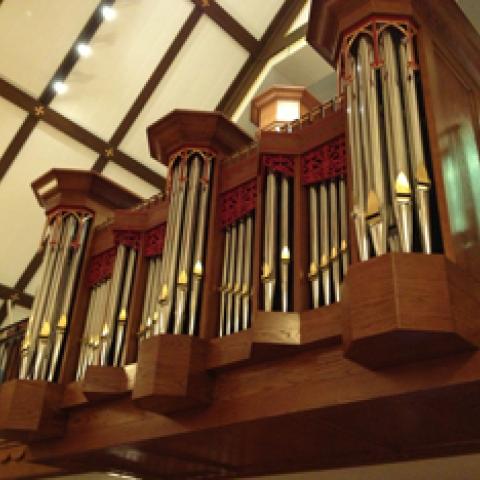
Twenty first- and second-graders from the University of Illinois’ “Uni Grammar School” learned how pipe organs sound, work, and are built during a recent visit to the workshops of John-Paul Buzard Pipe Organ Builders, LLC, Champaign, Illinois. The students are currently exploring “how things work” in their class. Several are focused on musical instrument-making.
The students toured the new organ currently being built for St. Bridget Catholic Church in Richmond, Virginia. Each got their turn at the console, playing the keys and manipulating the stops; a trip to the voicing studio demonstrated how organ pipes play, and what wind feels like coming out of a pipe’s mouth. The students discovered how a pipe is tuned, and why pipes of different shapes sound different.
The class then toured the service department shop a block away, where Keith Williams demonstrated a set of electro-pneumatic actions being releathered, and played the pipe organs set up in the shop: an 1860 Willis Scudamore organ, an 1886 two-manual Felgemaker, and a 26-note Memling-inspired portative. Buzard Pipe Organ Builders is committed to introducing children of all ages to the pipe organ through its various outreach programs, including support of the American Guild of Organists POE program.
For information: www.buzardorgans.com.




